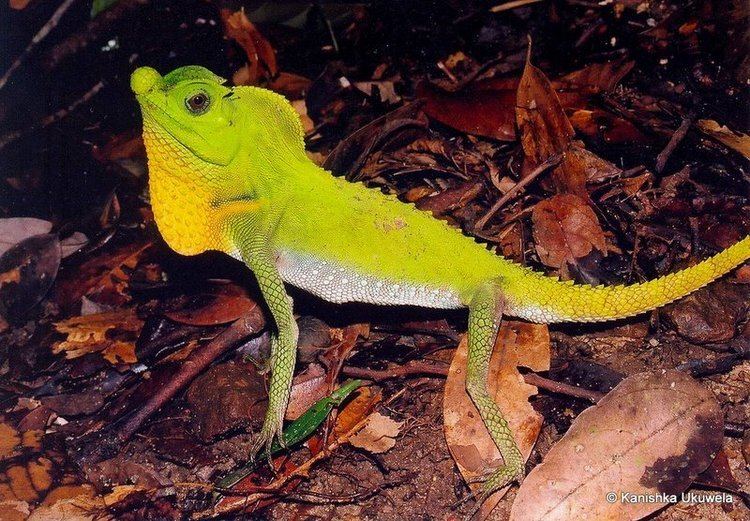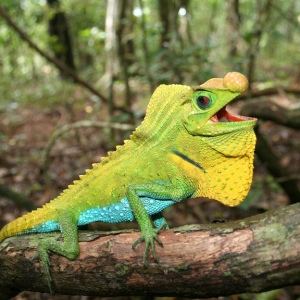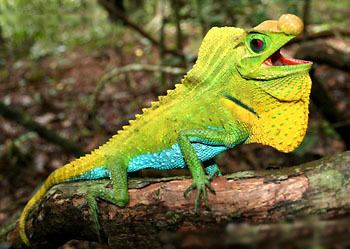Suborder Iguania Subfamily Draconinae Phylum Chordata Rank Species | Subphylum Vertebrata Family Agamidae Scientific name Lyriocephalus scutatus Higher classification Lyriocephalus Order Scaled reptiles | |
 | ||
Genus LyriocephalusMerrem, 1820 Similar Reptile, Agamidae, Ceratophora, Cophotis, Scaled reptiles | ||
Hump nosed lizard lyriocephalus scutatus kanneliya fores
Lyriocephalus scutatus is a species of lizard within the agamid family, the only species in the genus Lyriocephalus. It is the largest agamid endemic to Sri Lanka and lives in dense wet zone forests. It is also called the Hump-nosed Lizard, Hump Snout Lizard or the Lyreshead Lizard. In Sinhalese language, it is known as "Kandukara Bodilima - කදුකර බෝදිලිමා."
Contents
- Hump nosed lizard lyriocephalus scutatus kanneliya fores
- Lyriocephalus eating hornworms
- Habitat Distribution
- Description
- Ecology Diet
- Reproduction
- References

Lyriocephalus eating hornworms
Habitat & Distribution

A large agamid lizard, widespread in the wet lowlands and the midhills, from 25m up to elevation of 1650m. A number of localities are known, such as Ratnapura, Udawatta Kele Sanctuary, Gannoruwa, Gammaduwa, Hanthana, Mathugama, Knuckles Mountain Range, Adam's Peak, Gampola, Kandy and Sinharaja Rain Forest.
Description

Body is laterally compressed. Pair of small spines present at back of the head. Dorso-nuchal crest developed. Forehead scales keeled. A distinct bony arch appear on the head of adults. Tympanum absent. A V-shaped gular sac present. Large, keeled gular scales can be seen. Tail is short and compressed with a blunt tip. Dorsum is light green. Throat yellow. Rest of the venter is cream colored.
Ecology & Diet
Inhabited in forests with high canopy, it also enters home gardens, and is found on low trees as well as on the ground. Active at day, it ascending higher reaches of trees to sleep at night. The typical threat posture is open-mouth gape, revealing the bright red lining of the oral cavity. This species is also known to feign death when picked up. Diet comprises essentially of earthworms and also arthropods, including termites, butterflies, and moths. Young shoots and buds are also known to feed.
Reproduction

About 1-11 eggs with measuring 12-13 * 20-22mm per clutch are produced in the months of January, March, May, June, September, October, and December. Eggs are buried after laid in the soil, sometimes under bushes. Incubation period lasts 35 days.

